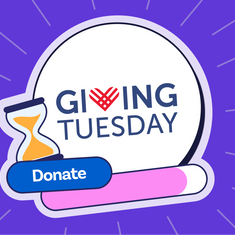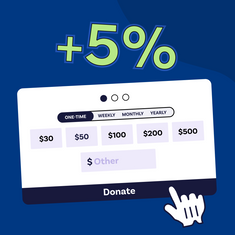
Getting donations from companies is a good fundraising tactic to have in your toolbox. Here’s how to make it part of your nonprofit’s strategy.
While individual donors are the lifeblood of most nonprofit organisations, using corporate sponsorships and partnerships strategically is an effective way to maximise your fundraising efforts. Getting donations from companies has a much higher return on investment for your time and effort.
For instance, asking for corporate donations before opening up campaigns to the public will give you a running start so individual donors can see that you’re not starting from zero. You can also cultivate more of a presence in your local community by getting to know company leaders and gaining exposure to their communities.
Some companies have set up giving programs that take a bit of preparation to apply for, but in many cases, all you have to do is ask! Read on to learn everything you need to know to start getting donations from companies.
Types of Funding
There’s a lot more to corporate philanthropy than charitable donations and grants. Consider the following types of sponsorship next time you’re looking for fundraising ideas.
1. Sponsorship
Corporate sponsorship is a bit different from a typical donation. It’s usually tied to a specific event, initiative, or project, and it comes with an agreement to publicise your partner’s generosity. Nonprofits will often include the company’s logo on event programs, T-shirts, a banner, or other materials in exchange for product or cash donations.
For example, if a business in your community agrees to donate water bottles to participants in a charity golf tournament, you might arrange to have the company’s logo printed on the bottles themselves. Don’t forget to tag your sponsors and show them some love in your social media promotions!
2. Corporate Partners
Relationships with corporate partners go a bit deeper than getting donations from companies, and they may be indefinite. Nonprofits typically share a common goal with corporate partners, like hunger relief or providing healthcare, and support goes both ways. Think of it as a collaboration with a specific purpose.
There aren’t really any rules about what a corporate partnership should look like, so there’s a lot of room to get creative. A corporate partner might take an active role in planning fundraising events and campaigns, helping you promote them, or volunteering.
3. Matched Giving
Like other kinds of corporate giving, matching gift programs are usually attached to a specific campaign, funding drive, or even a limited amount of time. Matched-giving sponsors may agree to give two or three times the amount that comes in from individual donations. Because these are limited partnerships, offering them at the right time can help you capitalise on opportunities like tax-deductible donations and giving days.
Nonprofits around the world have used Raisely’s matched giving feature to bring in tens of thousands of dollars at a time. Take Beyond Blue for example: Their end-of-financial-year appeal brought in $877,000 AUD, and matched funds from corporate partners made up $350,000 AUD of that total.
School for Life exceeded the initial goal for their Buy a Brick campaign long before it was over using matched giving days. Since then, they’ve used the same strategy to double and triple donations on special days like Day of the African Child and #GivingTuesday.
Based on the data we’ve collected from matched-giving campaigns on Raisely, we’ve come up with some benchmarks.
- 5% of Raisely campaigns are using matched giving
- For those that do, we see a 78% increase in fundraising for appeal, and a 152% increase for peer-to-peer campaigns.
- For appeals, without matched giving, fundraising peaks in week 1. With matched giving, fundraising continues to peak until week 6.
- For P2P, without matched giving, fundraising peaks week 5, and slowly decreases. With matched giving, fundraising grows 5x peaking at week 12. In other words, with matched giving, your P2P campaign has a longer life-time with more opportunities to raise funds. Without matched giving, there is a smaller window with a lot of pressure to fundraise in 3x less time.
- Appeal campaigns with matched giving have 35% more donations in their peak week compared with campaigns without matched giving.
- P2P campaigns with matched giving have 500% more donations in their peak week compared with campaigns without matched giving.
4. Corporate Grants
Corporate grants are usually focused on causes related to a specific industry, brand, product, or service. Global companies like Disney and Coca-Cola offer grant programs for eligible nonprofits, and Google Ad Grants are one of the most popular options.
Other national companies and even small businesses offer grants to local nonprofits in the same geographic area. Check out our list of corporate grants for nonprofits in Australia, New Zealand, the United States, Canada, and the United Kingdom.
Charitable organisations can raise tens to hundreds of thousands of dollars and more every year by applying for the right corporate grants. The key here is to do your research to find grants that are a great fit for your organisation and check your eligibility before applying.
Write a compelling proposal using hard data and storytelling to paint a picture of your organisation’s impact. Finally, track your applications to see when you can reapply. Some grants are only available a few times a year while others are open to applications year-round.
Don’t overlook volunteer grants, which take some effort to secure, but pay off in more ways than one. Employers set up these grants with local organisations where their employees volunteer regularly. They create a donation program to make a gift every time employees reach a certain number of volunteer hours. If you’re interested, a great first step is to find out where your best volunteers work!
5. In-Kind Donations
These can go a long way to help you make the most of grants and partnerships. In-kind donations are anything that isn’t a financial gift: usually skilled volunteer time or product donations like food, clothing, or supplies. (Gift cards are considered cash donations.)
It’s common for community grant sponsors to require a certain amount of in-kind contributions from your nonprofit or other sponsors. They want to see that you’re fully invested in your cause and using your resources wisely before they make their donation. As you partner with local organisations on events and projects, don’t forget to explore what they can offer in terms of in-kind donations.
How to Find the Right Partner
Now that you’ve seen a few different models for getting donations from companies, let’s talk about finding partners that’ll not only donate but provide enthusiastic support.
For small and medium nonprofits, it makes sense to start local. Whether your organisation’s mission is disaster relief or promoting well-being, there are likely companies in your area that share your goals. Find businesses that are aligned with your cause and have a charitable giving budget.
To start scouting out potential partners, you might check with chambers of commerce and local business directories. Again, it pays to find out where your biggest donors, volunteers, board members, and their families work. Finding out who makes giving decisions is critical for targeted, effective outreach. For bigger companies, ask for their corporate social responsibility department, or with small businesses, you might work directly with company leaders.
How to Make the Ask
The donation request is only one small aspect of building a strong relationship with corporate partners. You need to get to know them and show tons of appreciation for taking interest in your organisation. Once you’ve done that, you can offer a few sponsorship options in person or write a fundraising letter for a more formal approach. Giving them multiple choices for cash and in-kind donations will increase your chances of getting donations from companies.
In your sponsorship requests, be sure to highlight what you can offer in return and the perks for them:
- Showcase their branding at events: put their logo on banners, programs, T-shirts, or digital marketing materials
- Mention their generosity in your email newsletter or other communications
- Charitable activity looks good in their annual report
- Donations are tax-deductible
- Doing good is great press
Keep in mind that you might not get an answer right away. They may need time to think about it or discuss it with their leadership team. Be proactive and set a time to follow up so you know they’ll take the time to consider your request. When you do secure a new sponsorship, send a special thank-you like a handwritten note, a personalised video, or some swag.
Start Getting Donations From Companies
If corporate philanthropy isn’t already a part of your fundraising strategy, it’s definitely worth checking out.
We’ve made it easy to incorporate matched giving with campaigns on Raisely. You can also use our built-in CRM to manage relationships with corporate partners and sponsors. Easily track how much your corporate partners have donated and set reminders to stay in touch so you can keep those relationships going strong.
Request a demo today to talk to a fundraising specialist about using Raisely to start getting donations from companies.
Ready to create your
next campaign?

Kelsey Hoff is a content marketing specialist, freelance writer, blogger, and poet. She creates emotionally intelligent content that “listens first” for effective, ethical thought leadership.




